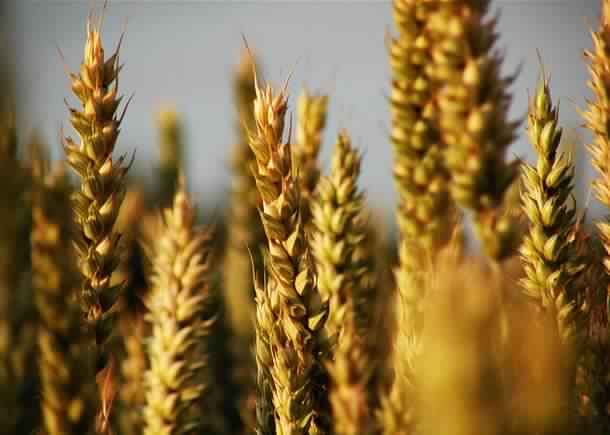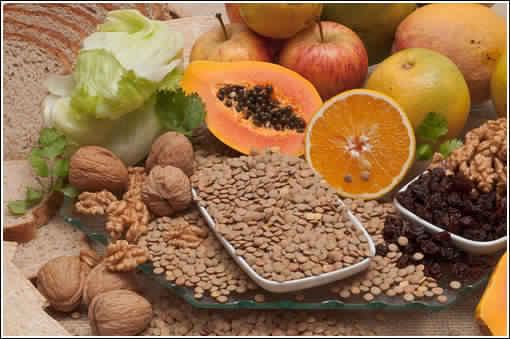 Dietary fiber, or fiber for simplicity are key components to a healthy balanced diet, they are always of plant origin. In other words we can not find dietary fiber in meat, fish or dairy products. We talk about dietary fiber, to those found in food.
Dietary fiber, or fiber for simplicity are key components to a healthy balanced diet, they are always of plant origin. In other words we can not find dietary fiber in meat, fish or dairy products. We talk about dietary fiber, to those found in food.
One can find fiber in more or less all plant foods, however, there are big differences between amount of each vegetable. You will find below the high fiber foods.
Dietary fibers are not assimilated by the human body, because they are not digested by digestive enzymes. Dietary fiber contains no calories because it is not metabolized.
At the chemical level, dietary fibers are polysaccharides, this is called complex carbohydrates or sugars.
Lignin (soluble fiber), however, has a different structure.
The chemical structure of the fibers makes the digestion by digestive enzymes impossible, which is not the case of other sugars.
Soluble or insoluble fibers:
We distinguish between soluble fiber insoluble fiber. Both types of fiber have beneficial health properties, with some differences, however.
– Soluble fiber
In soluble fiber, which dissolve in water are, for example pectin (apple a nutrient), gum (in beans or grains), mucilages or beta-glucan (in oats) .
Soluble fiber, which also are called viscous fibers can be fermented in the large intestine. In other words the bacteria of the large intestine are capable of degrading the soluble fiber.
– Insoluble fiber
In insoluble fiber, which do not dissolve in water, include cellulose (in vegetables such as carrot, whole wheat, beans), hemicellulose (in grains) or lignin (stems or leaves of certain plants).
The insoluble fibers, which are also called non-fermentable fibers, just can not be degraded or fermented by bacteria in the intestine.
Insoluble fibers are particularly effective, with a laxative effect, to fight against constipation.
Foods rich in fiber:
Soy, beans, corn, brown rice, prunes (dried plums), whole wheat (ex. Complete or black bread), apricots, artichokes, raspberry, flaxseed, some cheese, some yogurt, etc.
Sometimes called functional fibers, it is added to fibers by a manufacturing or industrial to food to improve its health properties. The total fiber then is the sum of natural fiber and functional fiber.

Effects of fiber
The fiber promotes intestinal transit and have a regulating effect. Particularly recommended in case of constipation. There is an increase in the volume and hydration of stools.
The fibers, particularly insoluble, fill with water and allow to act positively on intestinal transit. Indeed, the fibers water gorge themselves and perform faster stomach.
You feel satiated faster, which reduces hunger pangs and helps register very positively in a diet to lose weight. The fibers, however, require strong hydration, so it is important to drink a lot when consumed.
Soluble fiber is especially effective in lowering cholesterol levels.
It is interesting to note that the fibers have an influence on the absorption of nutrients (sugars, lipids, ..).
According to a study published in the French magazine Science & amp; Life (published July 2014), the fibers are transformed into the colon acetate, a molecule triggering a feeling of satiety.
Indications fiber and studies:
Dietary fiber is indicated for constipation, diverticulitis, hemorrhoids, they are key to a healthy weight (highly recommended in diets). Dietary fibers also have a preventive effect on stroke (7 grams or more of fiber daily reduced the risk by 7%), colon cancer and cholesterol rates.
The fibers have shown a preventive effect on type 2 diabetes, a Harvard study in the US showed that consuming full duriz could have a positive effect against this form of diabetes.
A study published by Harvard in April 2014, individuals who have suffered a myocardial infarction who ate foods rich in fiber after myocardial saw their risk of death reduced by 25% compared to those who ingested little fibers during the 9 years after the infarction. Read the study
According to Swiss researchers from Lausanne University Hospital (CHUV), eating fruits and vegetables rich in fiber could have a preventive effect against allergic asthma by altering microbial flora. In pregnant women this protection could spread to newborns.


